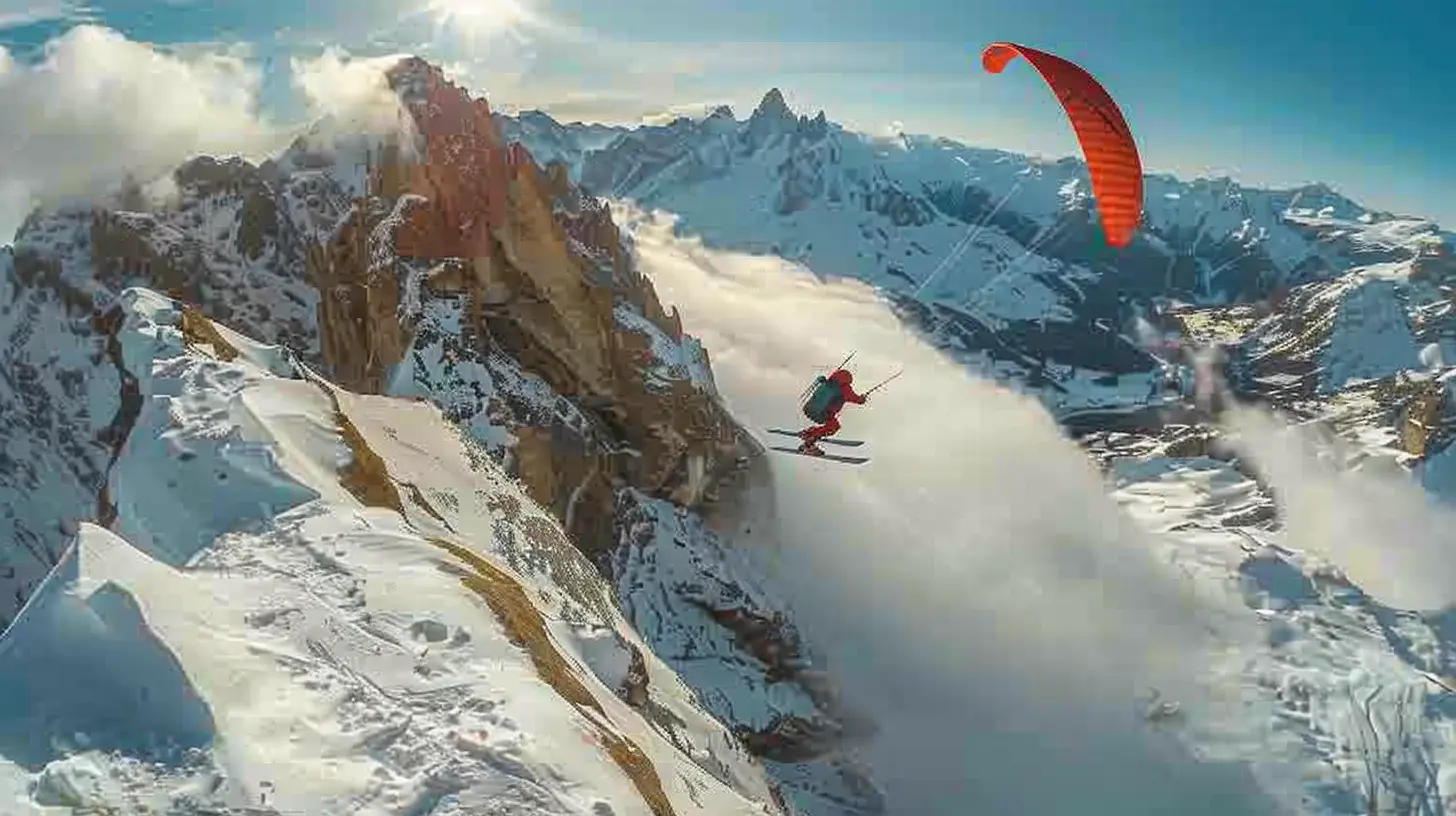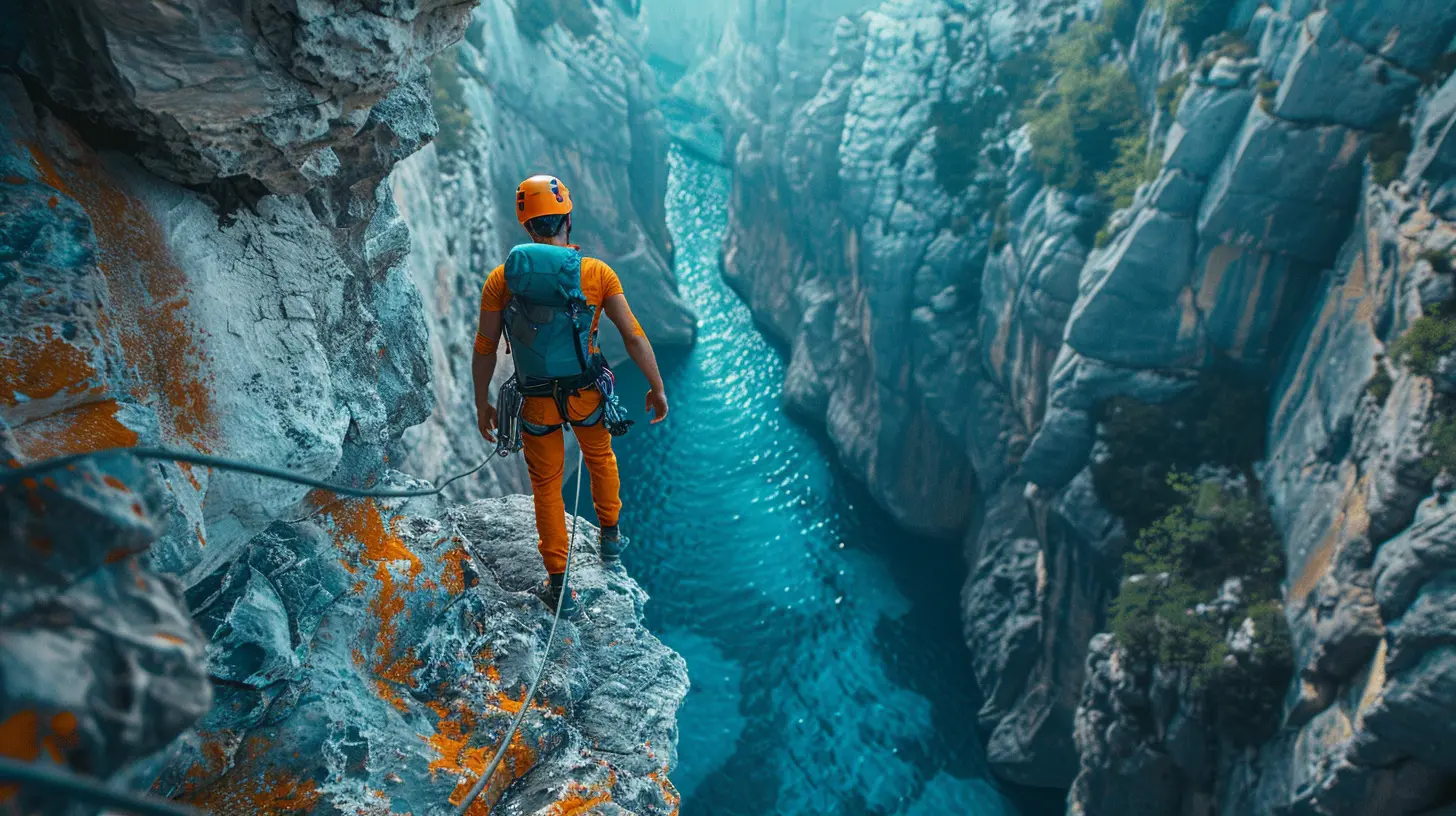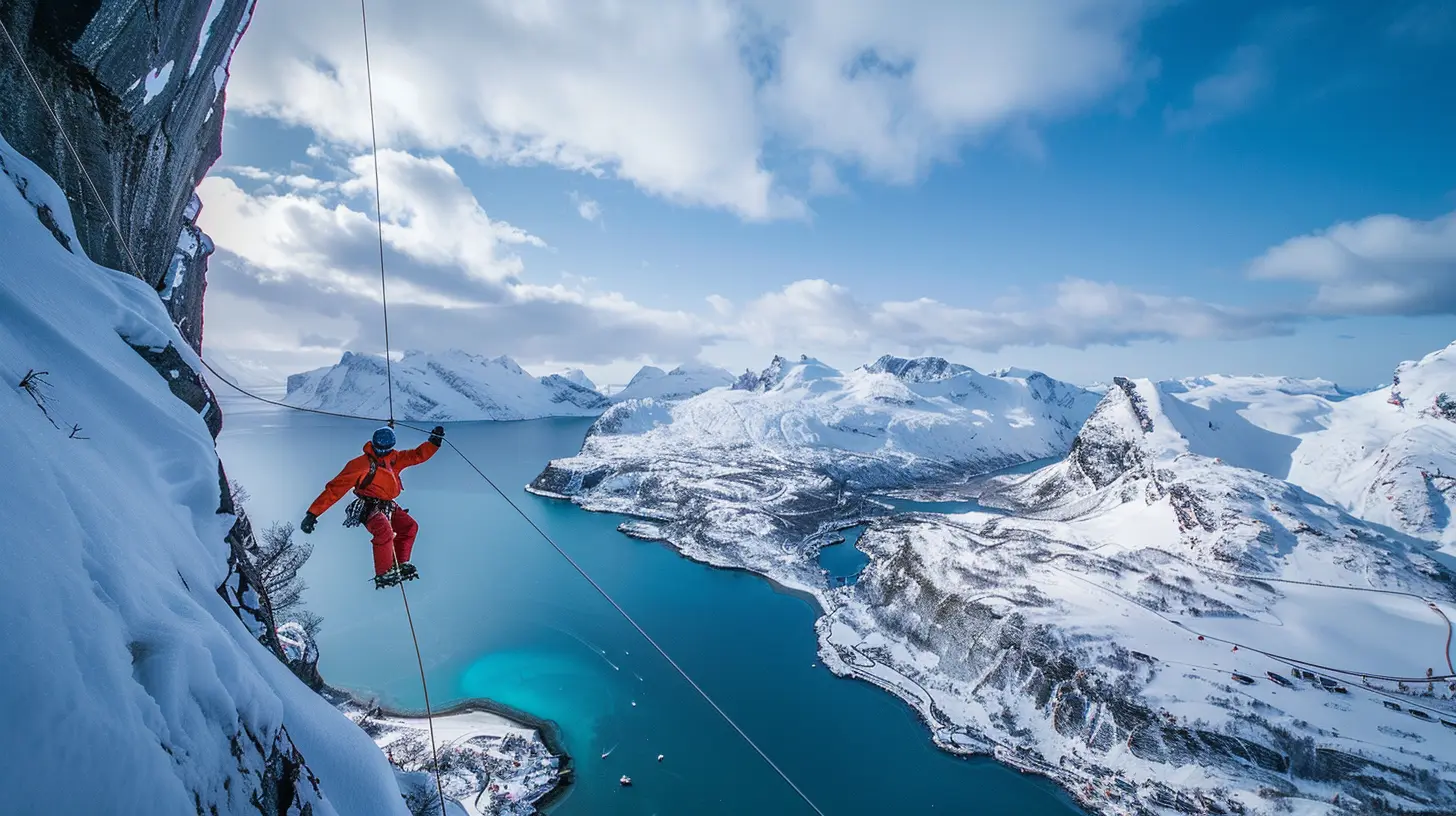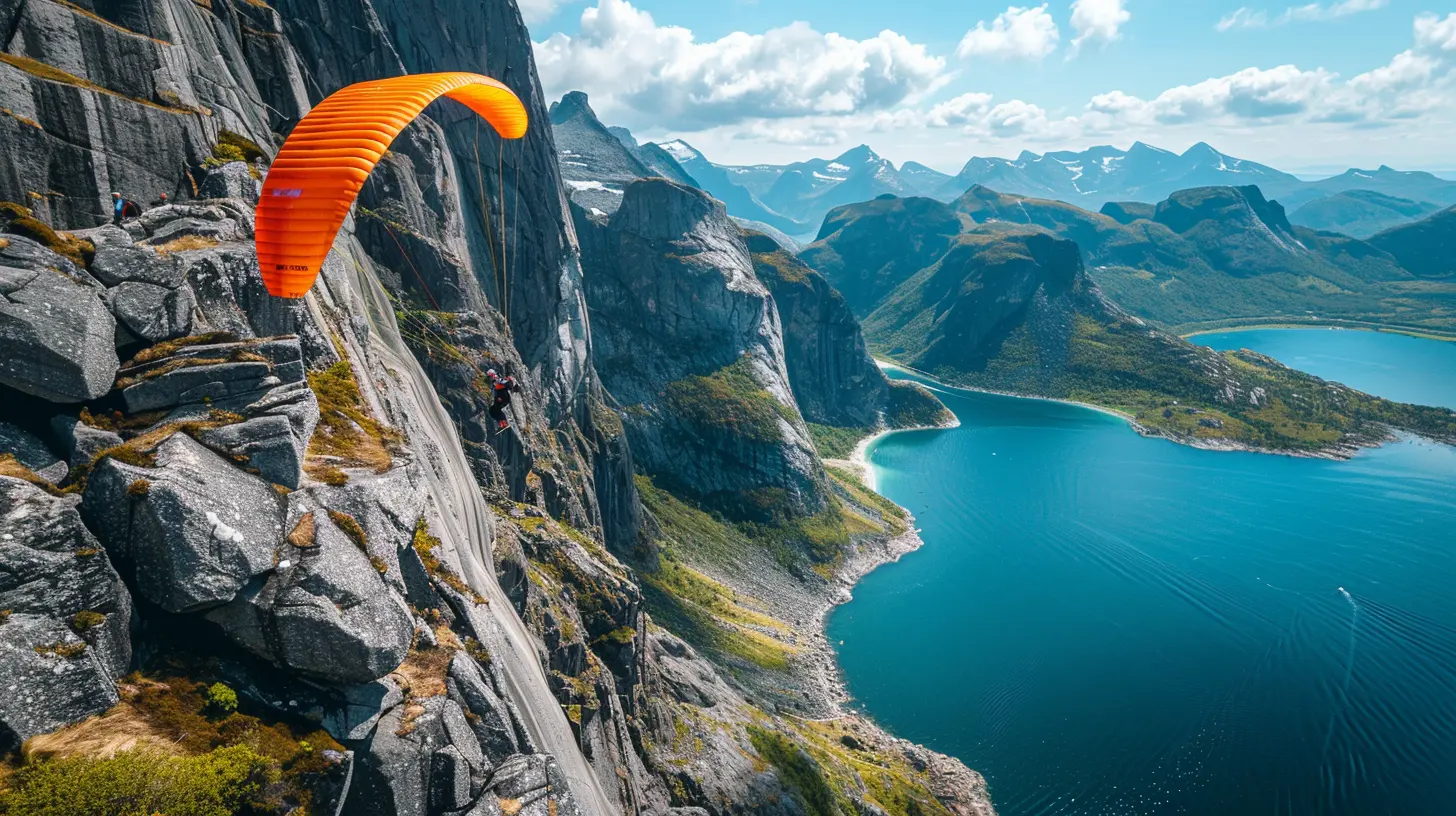Exploring the World of Extreme Sports Tourism
11 July 2025
Have you ever watched someone leap off a cliff in a wingsuit or kayak down a raging river and thought, “That looks insane—but also kind of awesome”? If so, welcome to the adrenaline-pumping, thrill-chasing universe of extreme sports tourism.
This isn't your average vacation. Forget lounging by the hotel pool or sipping cocktails on a beach (although that’s nice too). Extreme sports tourism is for those of us who crave heart-racing escapades that leave our pulse racing and our stories unforgettable.
So buckle up, because we’re going on a wild ride through the highs, drops, spins, and flips of this exhilarating travel trend.
What Is Extreme Sports Tourism?
At its core, extreme sports tourism is the blend of travel and high-adrenaline activities—think skydiving, bungee jumping, white-water rafting, mountain biking, and everything in between. It’s not just about pushing physical limits; it’s about seeking out the most thrilling experiences the world has to offer.You’re not just visiting a place—you’re experiencing it in the most hardcore way possible.
Maybe it’s scaling an icy mountain in Patagonia, surfing a monster wave in Hawaii, or snowboarding down untouched powder in the Alps. These aren’t your average excursions—they're the kind of experiences that leave a mark on your soul.
Why Extreme Sports Tourism Is Booming
The truth is, we’re all searching for something more than just sightseeing. Travelers today want experiences—real, raw, unforgettable ones—and extreme sports deliver in spades.1. The Adrenaline Appeal
Let’s start with the obvious: adrenaline. That rush of endorphins you get when you’re on the edge, doing something daring, is addictive. It’s the same chemical reaction that makes rollercoasters fun and haunted houses thrilling.When you're skydiving over the Swiss Alps or paragliding in Nepal, your body is in full-on thrill mode. And let’s be honest—it’s kind of awesome.
2. Social Media Bragging Rights
Be real—don’t you want to post that GoPro video of you ziplining over a jungle or scaling a sheer rock face? In the age of Instagram and TikTok, extreme sports tourism has become a surefire way to collect jaw-dropping content and a whole lot of likes.3. The "Break Free from Routine" Vibe
Extreme sports holidays let you hit the reset button on life. Tired of coffee shop meetings and the same old gym routine? Nothing smashes monotony like dangling from a cliff face or kayaking through Class V rapids.
Popular Destinations for Extreme Sports Tourism
Now that you’ve got the itch, where should you go to scratch it? Let’s dive into some of the top global hotspots where thrill meets travel.1. Queenstown, New Zealand – The Adventure Capital
Queenstown is like Disneyland for adrenaline junkies. From bungee jumping off the historic Kawarau Bridge to canyon swinging and heli-skiing, this place is fully loaded.Want to really push the limits? Try the Nevis Bungy—134 meters of pure vertical drop madness.
2. Interlaken, Switzerland – Sky High Thrills
Nestled between lakes and surrounded by the Swiss Alps, Interlaken is skydiving heaven. Jumping out of a helicopter with panoramic mountain views? Yes, please. Paragliding and alpine skiing are also big here.3. Moab, Utah, USA – Desert Mayhem
Moab is a rugged playground for rock climbers, off-roaders, and mountain bikers. The red rock terrain is both beautiful and brutal—perfect for testing the limits of mind and muscle.Try slickrock biking if you’re up for a surreal, Mars-like ride over petrified sand dunes.
4. Cape Town, South Africa – Oceans and Cliffs
From shark cage diving with great whites off the coast to abseiling down Table Mountain, Cape Town brings both water and land drama. Plus, the iconic views don’t hurt.5. Bali, Indonesia – Surf, Dive, Repeat
Bali offers world-class surfing, epic dives, and even volcano trekking. It’s the chill-meets-thrill kind of place, where your mornings can start with a yoga session and end with cliff diving into crystal clear water.
Types of Extreme Sports That Fuel Adventure Travel
Not sure what kind of extreme you're into? Here's a rundown of common categories to dip your toes (or your entire body) into.1. Aerial Sports
- Skydiving – Free-falling at terminal velocity? Count us in.- Paragliding – Float like a bird, dive like a hawk.
- Bungee Jumping – That heart-stopping second before the cord jerks you back? Pure magic.
2. Land-Based Madness
- Mountain Biking – Fast, dangerous, and dirty (in the best way).- Rock Climbing – Whether it’s traditional, sport, or ice climbing, it's all about grip, guts, and glory.
- Sandboarding – Like snowboarding, but on dunes. Hot, but fun.
3. Water World Wonders
- White Water Rafting – Navigating a frothy river while staying in the boat (hopefully).- Surfing – The ultimate test of balance, patience, and wave-reading.
- Scuba Diving with Sharks – Because swimming with fish is just too tame.
4. Snow and Ice Thrills
- Heli-Skiing – Get dropped by helicopter into untouched powder.- Snowmobiling – Zoom through snowy landscapes with roaring engines.
- Ice Climbing – Vertical ascents on frozen waterfalls? Yes, that’s a thing.
How to Get Started in Extreme Sports Tourism
So, you're pumped. You want to book that extreme trip—but don’t know where to start? Here’s a beginner-friendly breakdown to ease you into the action.1. Know Your Limits (Then Gently Push Them)
Start with activities that match your fitness and comfort level. You don’t need to go full Evel Knievel on your first trip.Maybe it’s a zipline tour before base jumping or class II rapids before taking on class V. Build your way up.
2. Choose Certified Operators
This isn’t the time to go with the sketchy cheapest option. Always book with licensed, reputable providers who have solid safety records and trained staff. Your life literally depends on it.3. Gear Up Properly
Safety gear isn’t a suggestion—it’s mandatory. Make sure your equipment is in top condition and fits correctly. Don’t be shy about asking for replacements or help.4. Travel Insurance Is a Must
Regular travel insurance often doesn’t cover extreme sports. Look for specific policies that include high-risk activities—because a busted ankle in the Andes isn’t exactly cheap.5. Train in Advance
You don’t need to become a Navy SEAL, but a decent level of fitness makes a huge difference. Cardio, strength training, and even flexibility can all boost your performance and prevent injuries.The Mental Benefits of Extreme Sports Tourism
Surprising fact: extreme sports aren’t just about physical feats—they’re mentally transformative too.- Confidence Boosts: Conquering fears and challenges can significantly boost your self-esteem.
- Mindfulness: When you're mid-jump or climb, you're 100% focused on the now. It's meditation... with more bruises.
- Stress Relief: The endorphin rush and focus can wipe away anxiety—at least for a while.
You return from these trips not just with souvenirs, but with a new mindset.
Is Extreme Sports Tourism for Everyone?
Look, not everyone wants to hang off a cliff at sunrise, and that’s totally okay. Extreme tourism can be tailored. Some people go big; others dip their toes in.What matters is stretching your comfort zone—whether it's kayaking in mild rapids or snowboarding for the first time. Your “extreme” might be someone else’s warm-up, and that’s perfectly fine.
The beauty of this kind of travel is how it meets you where you are—and then nudges you forward, just a little bit more.
Final Thoughts: Why It's Worth Taking the Leap
Exploring the world of extreme sports tourism isn’t just about the thrill—it’s about living life all the way up to 11. It’s about discovering what you’re made of while surrounded by jaw-dropping landscapes, fascinating cultures, and fellow adventurers.So if you’ve been feeling stuck, bored, or just craving something new, it might be time to answer the call of adventure. The world is full of epic destinations waiting to see what you’re made of.
The only question is… are you in?
all images in this post were generated using AI tools
Category:
Sports TravelAuthor:

Preston Wilkins
Discussion
rate this article
1 comments
John Pacheco
Exciting insights into thrilling adventure travel!
July 27, 2025 at 10:59 AM

Preston Wilkins
Thank you! I'm glad you found the insights thrilling! Adventure awaits!


